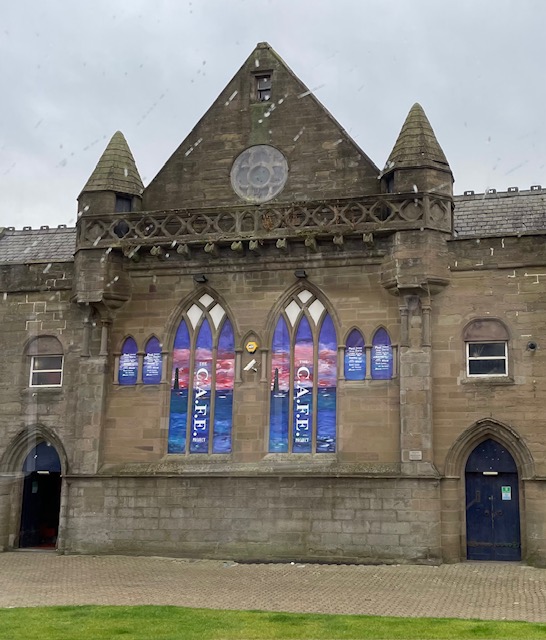Look! I’m doing a new thing; now it sprouts up; don’t you recognize it? I’m making a way in the desert, paths in the wilderness. — Isaiah 43:19
On our trip to Scotland last fall, I saw a trend that was a bit shocking at first. It seemed that if you saw a big, old church somewhere, the odds were that it was no longer a church. It could have been turned into a cafe. Or a coffee house. Or a bed and breakfast. Or a gallery. While we have this trend somewhat in the States, it’s so much more prevalent across the Atlantic.
My first inclination was sadness. I imagined the generations of people who had worshipped while surrounded by walls adorned with stained glass. The baptisms, funerals, marriages, and celebrations. But gradually, for myriad reasons, the people stopped coming. Diminishing funds couldn’t keep pace with skyrocketing costs. Contents were sold and congregations vanished.
Gradually, though, I started seeing things differently. The old way of connecting to God and each other wasn’t working any longer for them. That old way had to die. Freed from the imprisonment of cathedral stone, the Spirit could indeed touch people in newer, more relevant and life-changing ways. Sometimes an expression of religion has to die in order for faith to be reborn. It’s like what some United Methodists have experienced when their churches voted to disaffiliate: when they found themselves without a church building, they sought, found, or created new ways to worship, fellowship, and serve. They suddenly felt more alive, even in their grief.
I believe God will continue moving to bring about new ways of encountering the relentless Spirit of Jesus in our midst. I have to believe those ways will be found not only in words, liturgies, and rituals, but also, and more powerfully, in movements advocating for such Kingdom requirements as unconditional compassion and uncompromising justice. For example, the former church in the above picture now houses the C.A.F.E. project, standing for Community Alcohol Free Environment, dedicated to helping youth and the community.
Grief is understandable, but it’s temporary. God’s ongoing work is permanent. Leaving the past to embrace the new thing God is doing is the surest sign of faith. One pastor, whose shrinking flock sold its building and moved into shared space with another church, summarized what it takes: “This took a lot of courage for the congregation. They had to envision a future different from the past, different from the present, and different from a future that they had envisioned. In many ways, the congregation is more energetic, more hopeful, than I’ve ever experienced before.”
Postscript. After writing this, I ran across a timely reflection in one of Father Richard Rohr’s daily meditations.
Simply put, any notion of a future church must be a fully practical church that is concerned about getting the job of love done—and done better and better. Centuries emphasizing art and architecture, music, liturgy, and prescribed roles have their place, but their overemphasis has made us a very top-heavy and decorative church that is constantly concerned with its own in-house salvation

